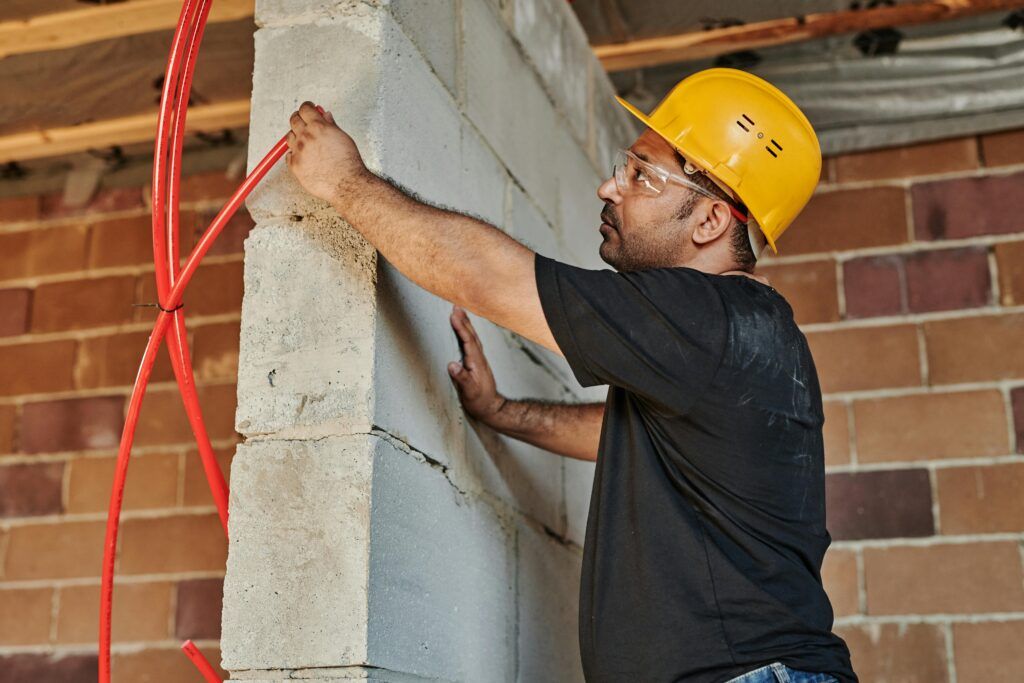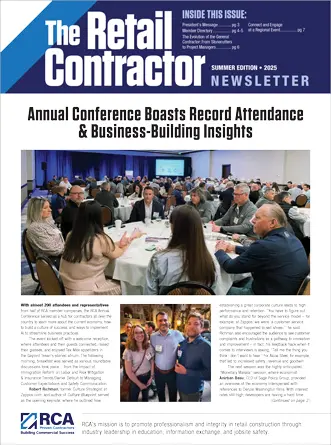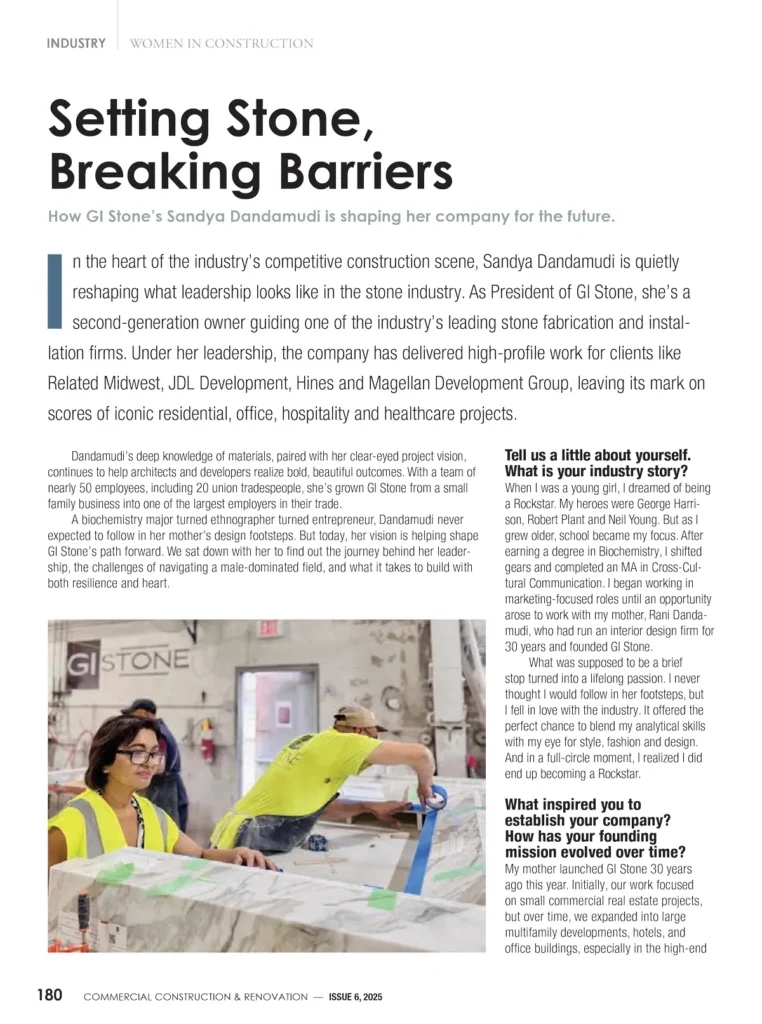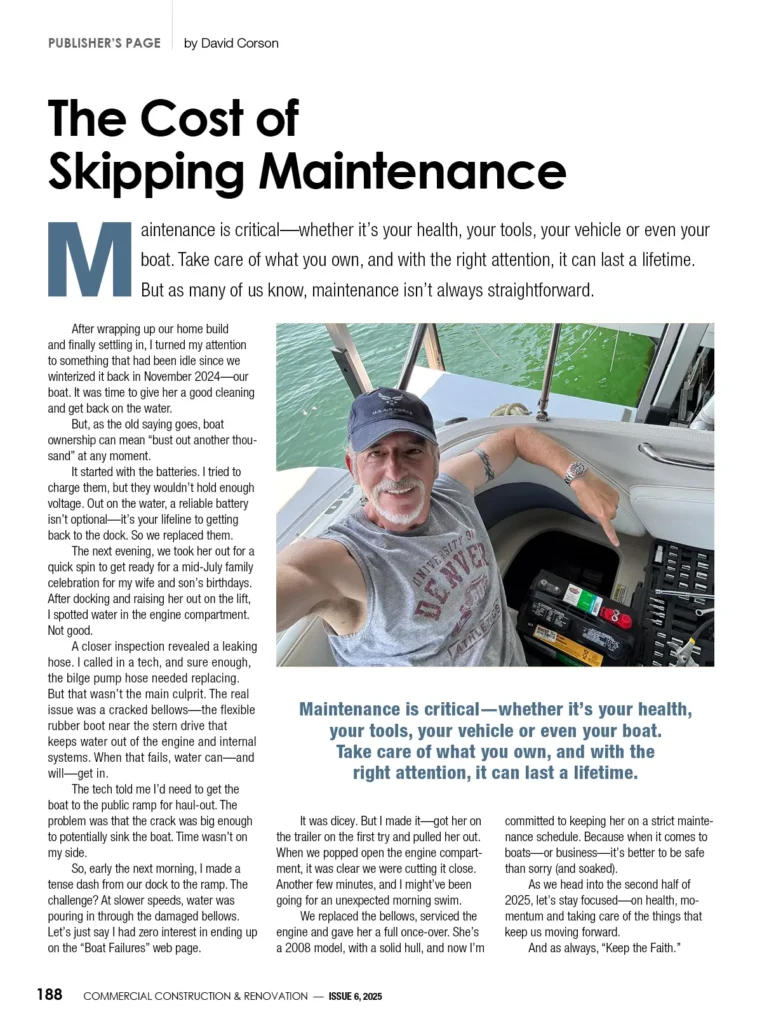The construction industry is notoriously hazardous, with risks ranging from falling objects to heavy machinery mishaps. While severe head or finger injuries often draw immediate attention, eye health is one of the most overlooked aspects of worker safety. The latest report of the Bureau of Labor Statistics (BLS) counts 2,120 cases of eye-related injuries or illnesses among construction trade workers and 1,860 among material-moving workers in 2020. Among construction trades, 31.1% of these cases involved construction laborers, and electricians make up 22.6% of the cases.
Though usually non-fatal, eye injuries can cause temporary or permanent vision loss, leading to diminished quality of life and reduced productivity. This underscores the critical importance of prioritizing eye health for construction workers. Let’s take a closer look below.
Construction workers and poor eye health
Construction workers are at a high risk of eye injuries due to common job hazards, including flying debris, dust, chemicals, and blunt force trauma. Grinding and cutting metal or wood can generate tiny airborne particles that may cause severe corneal abrasions. Cement dust, which often contains alkaline compounds, can also result in chemical burns upon contact.
Welding work poses a unique threat as well. Even workers standing nearby may suffer arc flash injuries due to UV radiation reflecting off surfaces, especially if they fail to lower their helmets into place. Former welder Jerome Spear from the American Society of Safety Professionals explains that safety glasses should always be worn beneath helmets to protect against stray particles and UV exposure. This will allow construction workers to be 10 times closer to the arc than if they weren’t wearing them.
Despite substantial risks to their health and vision, many construction workers don’t fully adhere to eye safety practices. A 2023 survey from Specsavers Corporate Eyecare reveals that nearly a quarter of tradespeople have experienced accidents on the job, yet over a quarter do not use protective eyewear consistently. Nearly half require some form of prescription lenses, but 60% rely solely on regular prescription glasses, with 20% unaware of the availability of prescription safety glasses that combine vision correction with impact resistance. These statistics reveal a significant gap between awareness and action, highlighting the need for greater emphasis on eye safety in the construction industry.
Tips for prioritizing eye health in construction
Both construction workers and employers play a role in creating a safer work environment where eye health is a priority. The first and most essential step in safeguarding eye health is using personal protective equipment (PPE) that targets the specific hazards present in the workplace. Basic safety glasses with side protection may be sufficient for low-risk tasks, while goggles, face shields, or specialized helmets are necessary for tasks that involve radiation or high-intensity light exposure, such as welding, lasers, or fiber optics work. Construction companies should mandate PPE use and increase information campaigns to raise awareness of the risks, given how 90% of workplace eye injuries can be prevented by wearing the proper eye protection.
Next, while PPE is critical, regular eye exams are also necessary, especially for the aging construction workforce. The BLS counts one in five construction workers as 55 or older, with those 25 and under making up just 10% of the workforce. As workers age, they become more susceptible to eye conditions, such as cataracts, that can worsen with time and UV exposure. An annual eye exam can help workers catch early symptoms and start preventative care. Retailer Target Optical has made these eye exams more accessible at their stores, with results available in less than an hour. Eye and emergency care providers within reach of a job site can especially benefit workers who require immediate eye evaluations after welding or exposure to chemicals, which could make the difference between a minor eye injury and permanent vision loss.
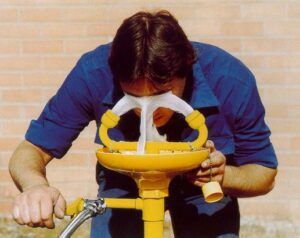
Image Source: Credit: selbst fotografiert under license CC BY-SA 4.0.
Lastly, creating a culture of safety in the workplace can make a significant difference in preventing eye injuries and increasing worker morale. Promoting emergency preparedness, such as installing eyewash stations and emergency showers on job sites, not only allows workers to quickly rinse away harmful substances, minimizing the extent of injury in emergencies. It also displays the company’s commitment to securing the safety of its workers. When workers feel secure and valued, they’re more likely to stay focused on their tasks, which ultimately benefits both the employees and the company.
With better awareness, accessible resources, and dedicated efforts from both employers and employees, the industry can move toward a future where every worker’s vision is safeguarded. For more on the construction industry, check out our other write-ups on Commercial Construction & Renovation.




